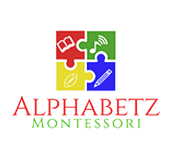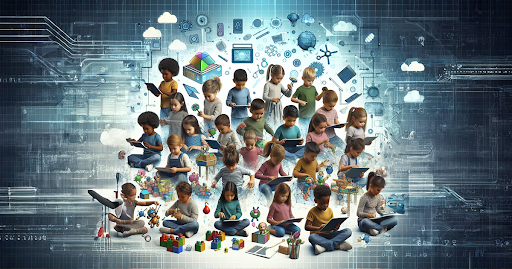In the rapidly evolving landscape of education, the fusion of technology with traditional hands-on learning approaches heralds a new era for child development. This blend, which we’ll call “Tech-Tactile Learning,” is not just about keeping up with the digital age but enhancing the educational journey of our youngest learners in profound ways. Let’s delve into how this innovative approach is reshaping the way children learn, play, and grow.
The Rise of Tech in Tiny Hands
The sight of a toddler swiping on a tablet with ease is no longer surprising. Technology’s infiltration into the lives of young children is undeniable and growing. However, this digital dawn in early childhood education brings with it a spectrum of opinions, studies, and expert insights on its benefits and potential pitfalls.
The key lies in balance—melding screen time with sensory-rich, physical interactions that the digital world cannot replicate. Research underscores the importance of this equilibrium, suggesting that while technology can open doors to new forms of learning, it should not overshadow the tactile experiences crucial to child development. Engaging with technology, when done mindfully, can enhance cognitive skills, foster creativity, and introduce new modes of learning. However, the challenge remains to ensure that this digital engagement is a complement, not a replacement, for the irreplaceable value of hands-on play and exploration.
Crafting a Tech-Infused Curriculum
Integrating technology into early childhood education demands a thoughtful approach. It’s about creating a curriculum where digital tools serve to enhance traditional learning methods. This integration should inspire curiosity, problem-solving, and creativity, leveraging technology as a tool for amplification rather than a focal point.
Several tech tools and apps have been designed with these young learners in mind. For instance, interactive storybooks that narrate tales while allowing children to engage with the storyline physically, or educational games that blend math and science with colorful, interactive challenges. These resources are not just screens to stare at but gateways to a more interactive and engaging learning experience, encouraging exploration and creativity through play.
Bridging the Digital Divide with Tactile Experiences
The true magic happens when digital tools and tactile experiences converge to offer a holistic learning journey. Educators and parents can play a pivotal role in crafting these experiences. For example, a virtual field trip to the rainforest can be enriched by a subsequent hands-on activity, such as planting seeds or creating a rainforest diorama, thereby cementing the learning in a tangible form.
Strategies to merge these worlds include using technology as a starting point for exploration—perhaps a story app that ends with a prompt for a related drawing or building project. Or, using augmented reality apps to bring historical figures to life in the classroom, followed by traditional dress-up or role-play. These strategies ensure that technology acts as a bridge to deeper, more meaningful learning experiences rather than an island of digital isolation.
Real-Life Success Stories
The proof of Tech-Tactile Learning’s efficacy is found in classrooms and homes worldwide, where educators and parents have witnessed firsthand the transformative power of blending technology with hands-on learning. One such story comes from a preschool where children used an app to learn about plant life cycles. This digital learning was paired with the physical planting of seeds, allowing children to observe the growth of plants over time. The outcome was a deeper understanding and engagement with the subject matter, reflected in the children’s excitement and curiosity.
Another example is a home setting where a child used a construction-based game to design structures, which they then attempted to replicate with blocks and other materials. This integration of digital and physical play not only improved the child’s problem-solving skills but also their spatial awareness and fine motor skills.
These stories underscore the potential of Tech-Tactile Learning to enhance engagement, understanding, and skill development among young learners. By thoughtfully integrating technology with hands-on experiences, educators and parents can provide a balanced, enriching educational journey that prepares children for a future where digital and physical worlds continue to converge.
In the world of child education, the blending of technology with hands-on learning is not just an innovative approach—it’s a necessary evolution. As we navigate this digital age, let’s embrace the opportunities it presents to enrich the educational experiences of our youngest learners, ensuring they grow into well-rounded, curious, and capable individuals. The journey of Tech-Tactile Learning is just beginning, and its potential to transform child education is boundless.

